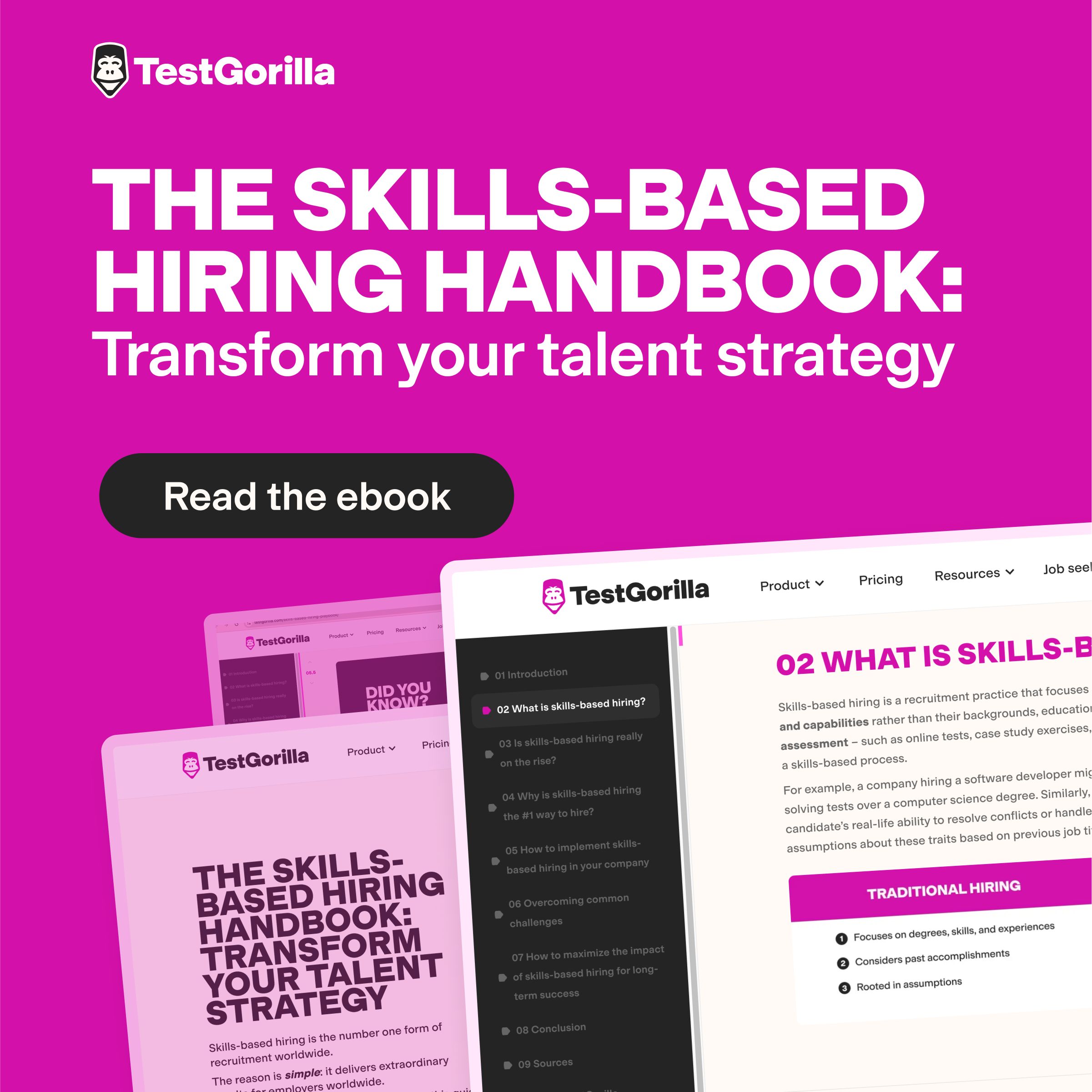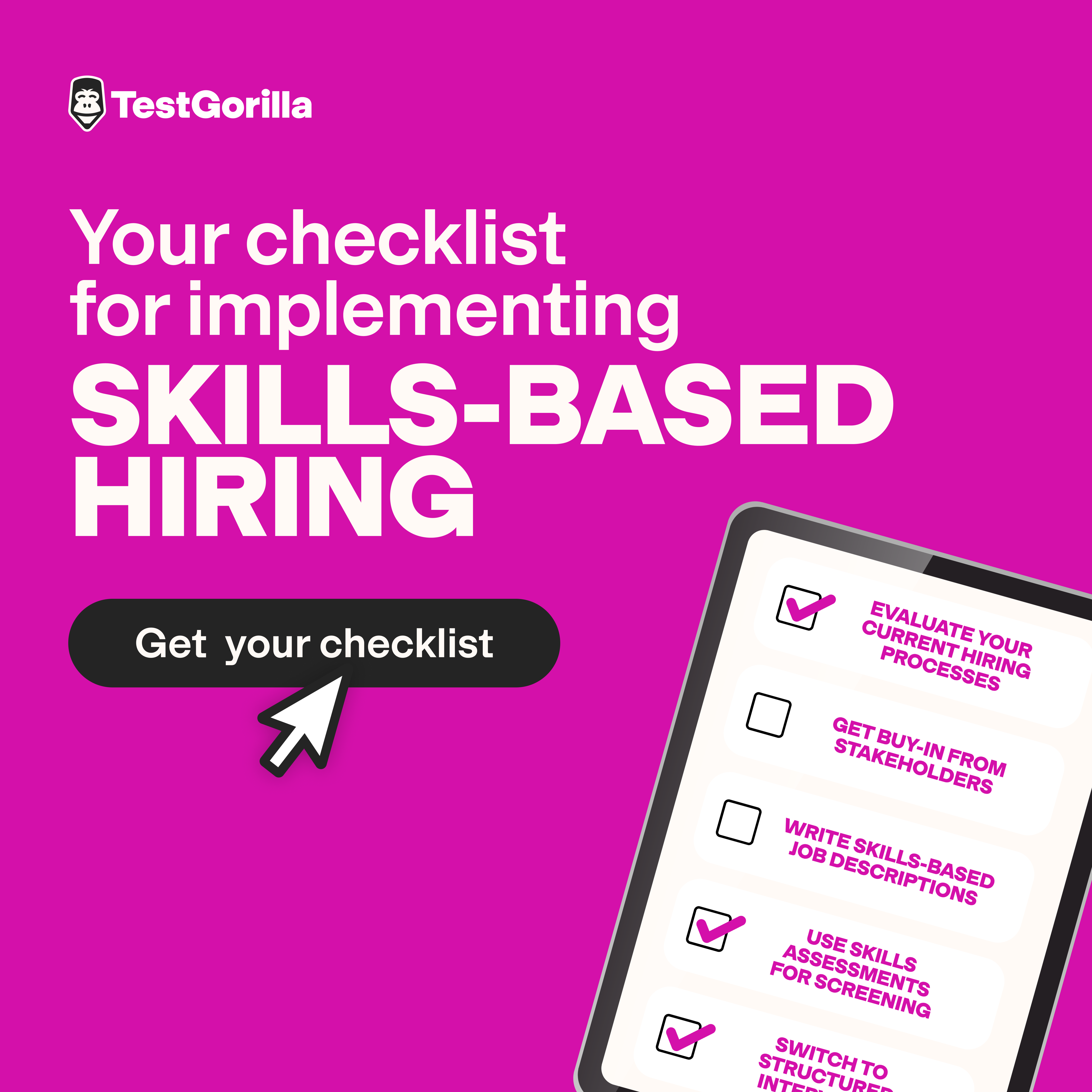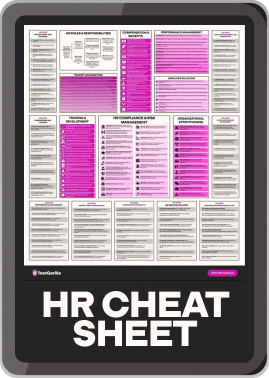8 tricky Swift developer interview questions to ask when hiring
Looking at resumes only tells you so much. The Swift developer who seems perfect on paper might freeze when faced with a complex retain cycle or find it difficult to handle the nuances of reference types in real-world code.
The right interview questions, alongside comprehensive Swift developer tests, reveal whether candidates truly understand Swift's architecture or are just reciting memorized definitions. We've listed eight of the trickiest questions below.
Why Swift developer interviews need to go deeper
Swift evolves fast. A few versions ago, we didn't have async/await. Before that, SwiftUI didn't exist at all. To make sure candidates are up to speed, Swift developer interviews need to check whether the candidate has been keeping up with all the important trends.
Simply knowing the language basics isn't enough. The best Swift developers understand that poor memory management leads to crashes and performance issues, improper state management in SwiftUI creates unpredictable UI behavior, and that misunderstanding concurrency patterns can cause data races and frozen interfaces.
Comprehensive iOS developer assessments and tough interview questions will reveal whether your job candidates can build stable, performant apps or will struggle when faced with real-world iOS development challenges.
What to look for in a Swift developer
When interviewing Swift developers, you want to cover some key areas:
Core Swift knowledge: Do they have a strong grasp of optionals, error handling (like throws and Result types), value vs. reference types, and protocols? Do they understand Swift's support for protocol-oriented approaches, generics, and memory management using ARC, including the potential for memory leaks?
Problem-solving skills: Can they systematically tackle bugs, including identifying memory leaks, analyzing memory usage patterns, and optimizing performance?
Code organization: Do they write clean, maintainable code following Swift conventions (like API design guidelines) with an emphasis on code reusability and scalability?
Architecture understanding: Are they familiar with iOS design patterns (MVC, MVVM, VIPER, etc.) and how a self-contained block of code fits into larger systems, ensuring maintainability?
Framework knowledge: Are they proficient with UIKit or SwiftUI, and do they have experience with asynchronous operations in Foundation, Combine, or Swift concurrency?
Testing practices: Do they have experience with unit testing (XCTest), UI testing, mocking, and dependency injection to ensure robust applications?
To see how TestGorilla helps evaluate such skills, take a product tour.
The best insights on HR and recruitment, delivered to your inbox.
Biweekly updates. No spam. Unsubscribe any time.
8 tricky Swift developer interview questions
1. "Explain the difference between strong, weak, and unowned references in Swift, and when you'd use each to prevent memory leaks."
Why it's a good question: As Igor Golovko, Head of Development at TwinCore and expert in Swift development, states, "Understanding retain cycles and how weak and unowned references interact with ARC is crucial, and can be a stumbling block."
This question assesses whether candidates truly understand Automatic Reference Counting (ARC) and can prevent retain cycles – common causes of a memory leak.
What a strong answer looks like: The candidate should explain:
strong references increase the retain count of an object, keeping it in memory.
weak references don't increase the retain count and automatically become nil when the referenced object is deallocated. (They must be optional.)
An unowned reference also doesn't increase the retain count but assumes the referenced object will always exist for the lifetime of the reference. Accessing an unowned reference after its object is deallocated causes a crash.
What to listen for: Understanding of ARC, retain cycles, and practical scenarios for each reference type, especially using [weak self] in closures.
2. "What are escaping and non-escaping closures, and why does it matter for asynchronous tasks?"
Why it's a good question: Closures are fundamental to Swift, especially for asynchronous tasks and event handling.
What a strong answer looks like: The candidate should explain that non-escaping closures are executed before their containing function returns. Escaping closures, marked with @escaping, may be stored and executed after the function returns (e.g., in a completion handler for a network request).
They must mention that escaping closures requires special memory management considerations, particularly capturing self. Using [weak self] or [unowned self] in the capture list is often necessary to prevent retain cycles, especially in asynchronous tasks.
Follow-up question: "How does the @escaping attribute affect compiler optimizations or ARC behavior?"
3. "How does Swift's type inference work, and when might it create readability or debugging issues?"
Why it's a good question: This question reveals whether a Swift developer prioritizes code clarity and long-term maintainability over mere brevity, and their attention to type safety.
What a strong answer looks like: A strong answer explains that type inference allows Swift to deduce the type of a variable or constant from its initial value or context, reducing verbosity. However, candidates should recognize its limitations:
Over-reliance can make code harder for team members to understand, especially with complex expressions or less obvious return types from functions.
Complex expressions may lead the compiler to infer an unexpected or overly broad type.
Explicit types often make debugging easier, API contracts clearer, and can help catch errors at compile-time rather than runtime.
Look for candidates who advocate for explicit types at API boundaries, for complex initializers, or whenever inference might lead to ambiguity.
Red flag: Dismissing the importance of explicit types for readability in larger projects.
4. "Explain the difference between synchronous and asynchronous operations in Swift. How have recent Swift versions improved handling concurrency?"
Why it's a good question: Modern iOS apps rely heavily on concurrent programming for responsiveness and performance. This question tests fundamental understanding of threading models and Swift's evolution in managing asynchronous operations.
What a strong answer looks like: The candidate should contrast synchronous operations (which block the current thread until completion) with asynchronous operations (which allow the current thread to continue other work while the operation is scheduled to execute later).
Strong answers will discuss both traditional approaches: Grand Central Dispatch with dispatch queues and completion handlers, plus OperationQueues for complex task management with dependencies.
They should also cover modern Swift concurrency, including async/await, Actors, and Structured Concurrency with Tasks. For complex scenarios like these, you might even consider creating a custom coding test to drill down into specific niche skills.
Follow-up question: "Can you describe a scenario where an Actor would be a better choice than a class protected by a GCD queue?"
5. "How would you manage state in a complex SwiftUI view? Discuss the tradeoffs between different property wrappers."
Why it's a good question: SwiftUI is Apple's modern declarative framework for UI development. Understanding its state management mechanisms is important for building responsive and maintainable UIs.
What a strong answer looks like: The candidate should discuss SwiftUI's key property wrappers for state management:
@State for simple, transient view-local value-type state.
@Binding for creating a two-way connection to state owned elsewhere (often by a parent view).
@ObservedObject for subscribing to an external reference type (conforming to ObservableObject) that may be shared and whose lifecycle isn't tied to the view.
@StateObject for instantiating and managing the lifecycle of a reference type (conforming to ObservableObject) owned by the view.
@EnvironmentObject for accessing an ObservableObject shared widely through the view hierarchy.
Good answers explain the lifecycle differences and when each is appropriate.
What to listen for: Understanding of source of truth, data flow, and view identity in SwiftUI.
6. "Swift is often described as supporting protocol-oriented programming. How can you leverage its protocol-oriented features to improve code reusability?"
Why it's a good question: It reveals whether a candidate understands one of Swift's core philosophies and its impact on design patterns beyond just knowing how to declare and conform to protocols.
What a strong answer looks like: Strong candidates will explain that protocol-oriented approaches in Swift focus on defining capabilities and contracts (protocols) that types can adopt, rather than relying heavily on class inheritance hierarchies.
They should highlight how protocols define a blueprint of methods, properties, and other requirements, and how protocol extensions can then provide default implementations or additional functionality to multiple types conforming to a protocol, enhancing code reusability.
Follow-up question: "When might class inheritance still be preferred over a protocol-oriented approach in Swift?"
7. "Which design patterns have you found most useful in Swift development? Give an example of how you've implemented one."
Why it's a good question: This question tests practical experience in structuring real-world applications and applying established solutions to common problems, moving beyond simple coding exercises.
What a strong answer looks like: Strong candidates will discuss design patterns relevant to Swift and iOS development, such as:
MVVM (Model-View-ViewModel): For separating UI logic (ViewModel) from UI presentation (View) and business logic (Model).
Coordinator: For managing navigation flow and decoupling view controllers.
Factory: For creating objects with a complex setup or providing an abstraction over instantiation.
Singleton: For ensuring a single instance of a class that provides a global point of access (e.g., for shared resources like a network manager or user preferences), but used judiciously.
Delegate: For enabling one object to communicate back to another (its owner or controller) in a decoupled way.
Observer: For allowing objects to subscribe to and receive updates about state changes in another object.
The best answers include a specific, detailed implementation example, explaining the problem it solved, why that pattern was chosen, and how it improved code quality, maintainability, or testability.
What to listen for: Clarity in explaining the pattern and its benefits in a concrete Swift context.
8. "Explain Swift's error handling model. What's the difference between try?, try!, and regular try?"
Why it's a good question: Robust error handling is essential for app stability. This question tests the candidate's understanding of Swift's structured approach and their commitment to writing safe code.
What a strong answer looks like: Candidates should explain Swift's error handling model using functions marked with throws and the do-catch statement.
They should clearly distinguish between:
Regular try: Used within a do-catch block or inside another throwing function.
try?: Converts a result to an optional, returning nil if an error is thrown.
try!: Disables error propagation; crashes if an error is thrown. Use rarely.
Look for discussion about when each approach is appropriate and strong cautions about overusing try!.
Red flag: Advocating for try! as a common solution or not understanding error propagation.
Red flags to watch for
During interviews, be wary of these warning signs:
Theoretical answers without practical application: For example, knowing what a closure is but not when to use [weak self] in asynchronous code.
Inability to explain the "why": Understanding syntax but not the underlying design implications.
Memorized terminology without depth: Using terms like "protocol-oriented programming" without being able to articulate its practical benefits or provide concrete examples of its application in Swift.
Over-reliance on a single approach: Suggesting GCD for all concurrency needs without considering Swift's modern alternatives.
Difficulties with core concepts: Confusion about optionals, type safety, or value vs. reference type semantics.
Don't rely on interviews alone
Interviews reveal one side of a candidate's abilities, but some developers excel at talking about a programming language more than coding in it. To get the full picture, combine interviews with hands-on talent assessments.
As Panayot Kalinov, senior software developer at Casinoreviews.net, advises, "Watch how they work through a problem in real time... You learn a lot more from watching how someone thinks than from what they memorize."
TestGorilla's Swift coding tests help you objectively evaluate:
Problem-solving approaches in practical Swift programming challenges.
Code organization, readability, and maintainability.
Memory management practices and understanding of memory usage.
Application of error handling mechanisms in scenarios requiring debugging or fault tolerance.
Algorithm implementation and handling of asynchronous operations and concurrency exercises.
Conclusion
Finding Swift developers who understand the subtleties of memory management, concurrency, and iOS architecture requires going beyond basic interview questions. The tricky questions outlined here help you identify candidates with the depth of knowledge needed to build stable, maintainable iOS applications.
For a comprehensive hiring process, pair these targeted interview questions with objective Swift assessments that evaluate practical skills. This combination helps you find developers who both understand Swift's concepts and can implement them effectively.
Ready to find your next Swift developer star? Book a demo today!
You've scrolled this far
Why not try TestGorilla for free, and see what happens when you put skills first.




















